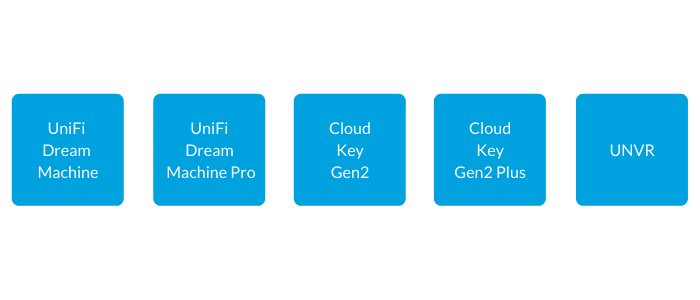For many years now Ubiquiti have had a familiar naming convention for their range of products, from AmpliFi to UniFi and everything in between. It is fair to say there was quite a variety of products, and at times it was difficult to figure out where the alignment was between them all. Now it seems that Ubiquiti have worked their way into an alignment, with the new UniFi OS at its centre
UniFi Controller
Although Ubiquiti also have a significant range ISP products, in this case we are referring to their other product ranges, more specifically, UniFi. At the core of the previous generation of Ubiquiti UniFi porducts was a piece of software called the “controller”. The controller software can be hosted anywhere from a local server to a virtual machine and acts as a management platform for the network equipment.
UniFi OS Introduction
The introduction of UniFI OS signals a significant change in approach from Ubiquiti. The concept of a UniFi controller is now different, although it is important to note that the management platform, previously known at the controller can still be self hosted. This change in naming convention feels more like a change of terminalogy as opposed to any change in approach per se, but that will become more clear in time.
UniFi Consoles
Essentially the new product terminology introduced is centred around the next generation UniFi hardware devices that host UniFi applications. To date, these hardware devices are known as UniFi Consoles and their purpose is to host UniFi applications

UniFi Applications
The purpose of the UniFi Consoles listed above is to host the 4 main UniFi applications. There are only 4 for now, and again we do not know what else might appear here in the future. The 4 applications are listed below:
- Network – Wired and Wireless network management
- Protect – Scalable camera security
- Access – Personalised floor and door security
- Talk – Full featured phone solution
These applications will be directly accessable via the centralised UniFi cloud platform although it is possible to create access locally. It is also still possible to access the console locally if you have a hostname resolving to the public IP with a port forward in place. This is important if you want to capture guest email on UniFi networks and MyPlace provide a free hostname to all clients if one is needed.

Alignment from Ubiquiti
The alignment of these 4 main product lines into applications running on a console is an intersting move from Ubiquiti and is quite telling as to where they see the future going. Some, but not all of these applications, and their physical products by extension, are perfect for home networks. Again, some, but not all of the applications will be perfect for the SMB environment. It looks like it covers a wide base and you only use the applications, and the associated products, that you need.
What now for the UniFi Controller?
So what now for the UniFi controller that was so central to all UniFi products previously. It is still possible to download the UniFi Controller, sorry Network Application, software and run it in its own environment like virtual machine or local server for example. There are limitations however as the Network application self hosted, will not be able to run products from the other applocations that Ubiquiti provide.
UniFi OS Naming Terminology
To what extent this new naming terminology from Ubiquiti sticks remains to be seen. A lot of service providers will continue to talk about UniFi controllers over Network Application. Overall however it is good to see some alignment in the Ubqiuiti product ranges and we look forward to seeing what comes next in he Ubiquiti product line.
